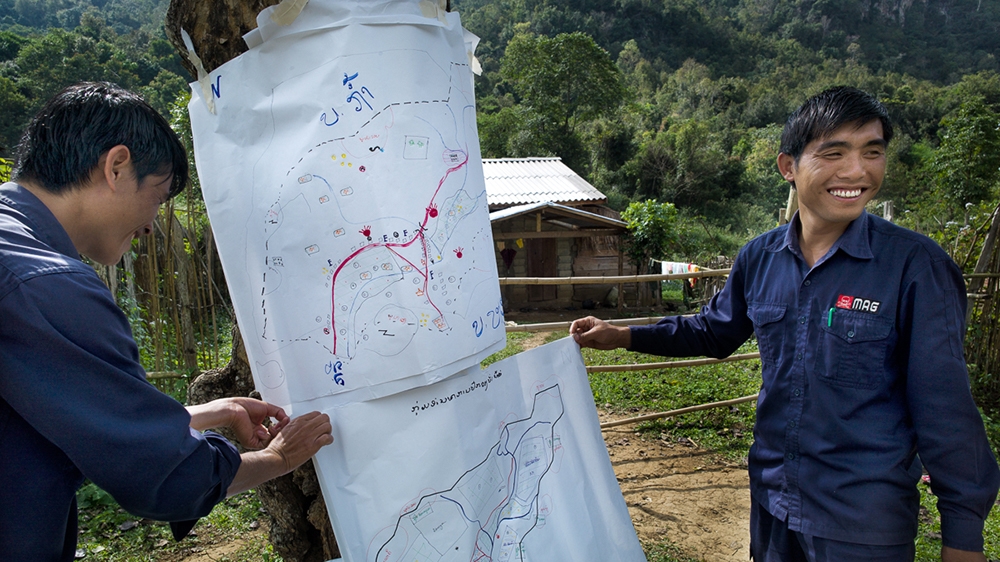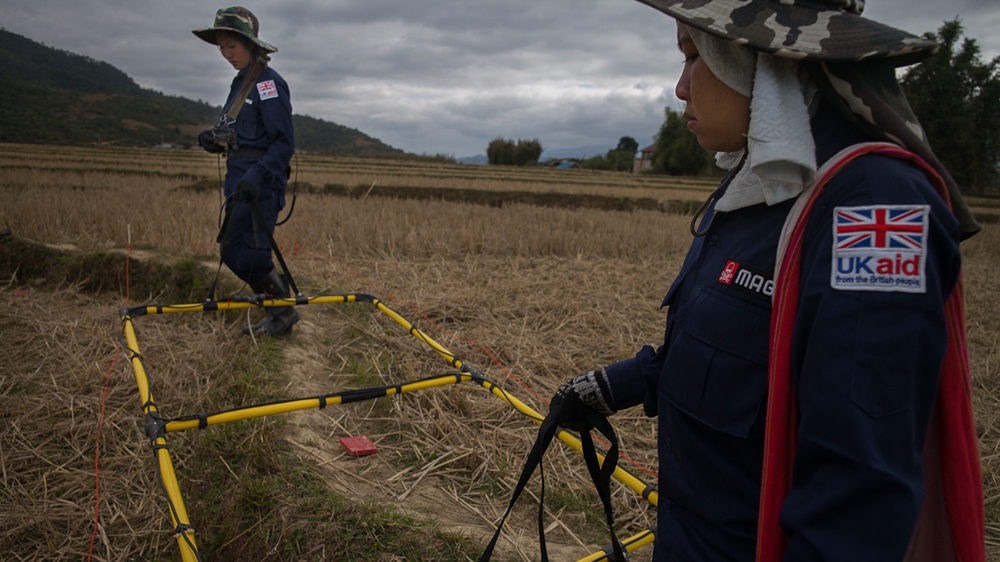![US bombs continue to kill in Laos 50 years after Vietnam War A HALO Trust UXO clearance team member works a hillside, metre by metre. The forested gully in the background is feared to contain a high concentration of UXO [Padraic Convery/Al Jazeera]](https://www.aljazeera.com/mritems/imagecache/mbdxxlarge/mritems/Images/2018/11/21/181fc8e7839e443e93cb2928af80f77c_18.jpg)
US dropped two million tonnes of bombs on Laos at height of Vietnam War. Why are cluster munitions still killing?
Vientiane - This year's Thanksgiving celebration marks 50 years since the American military embarked on the biggest bombing campaign in history, decimating the small Southeast Asian country of Laos by dropping more than two million tonnes of bombs on it at the height of the Vietnam War.
Half a century on, innocent lives are still being lost as the country struggles with the leftovers of the conflict.
On Thanksgiving Day in November 1968, the United States escalated its war against North Vietnam in Laos.
Then-US President Lyndon B Johnson had ordered traditional turkey dinners to be helicoptered in to US troops who were secretly deployed in the quiet, landlocked country to sever the North Vietnamese supply lines that ran through the east.
At the same time, the US began dropping millions of tonnes of bombs - they "fell like rain" on the supply lines in Laos, a network of paths and tracks known as the Ho Chi Minh Trail, and most of the east of the country.
That hugely redoubled effort to shut down the trail saw a planeload of bombs dropped on Laos every eight minutes, 24 hours a day, for nine years.

Now, some 80 million unexploded bombs and air-dropped cluster munitions left over continue to maim and kill Laotian men, women and children.
Manixia Thor is a Laotian operations manager at the UK-based Mines Advisory Group (MAG), one of several NGOs trying to clear the land of unexploded ordnance (UXO).
"About 75 percent of injuries from cluster munitions involve children," she tells Al Jazeera, referring to the tennis-ball sized fragmentation bomblets that have acquired the local name "bombies".
They were dropped in their millions on Laos. Thousands of children have been killed or severely wounded by them, and Thor says they are "everywhere".
Unexploded cluster bombs are found in particularly large numbers in the northern province of Xiengkhouang, where Thor works, and where MAG focuses its survey and clearance efforts.
They look attractive to children; anything shaped like a ball is tempting for a child in a country as poor as Laos, where toys and other amusements are few and far between.

Calum Gibbs, a 26-year-old Scot working in the southern province of Savannakhet for HALO Trust, a UK-based NGO focused on bomb clearance, says data suggests there have been 50,000 casualties since the war ended.
Although the number of deaths has fallen from the 200 to 300 annually in the 1990s to around 50 today, all uncleared land is potentially dangerous.
Gibbs believes education is critical to avoiding death and injury among young children.
"We get out and try and educate as much as possible, and show pictures of these things to kids," says Gibbs. "They have a UXO song, and the kids sing it so they remember that UXO are dangerous."
But it's not just children at risk. Most of Laos' predominantly rural population are involved in rice cultivation, and even on land that has been tilled, the "bombies" are a threat.

Two decades ago in Xiengkhouang Province, unexploded cluster bombs lay scattered on the ground in rice fields, and farmers were careful to sow only the land around them. Many have since been destroyed by clearance teams, but others lurk beneath the surface.
"In some places where people plant rice, every year some pieces will come up," Thor says. "It still happens, even on cultivated land."
On forested land, the problem is worse, and as more vegetation is cleared to grow rice for Laos' expanding population, more people are at risk.
"In January 2000, about 4km from Phonsavan, a villager was digging and found a big bomb," says Kongkeo Phanthaborivat, an entrepreneur from the Xiengkhouang provincial capital of Phonsavan. "They tried to open it by themselves, and the bomb exploded. Two people were killed at the same time."
Manixia Thor, Mines Advisory Group
And it's not only humans that trigger the explosives, but also animals.
Despite the challenges, however, some say the battle against the bombs is being won, albeit at a slow pace. By one estimate, it will be 200 years before Laos is safe again.
Survey and clearance efforts received a boost when former US President Barack Obama, in his final months in office, pledged to double his country's $45m, three-year contribution to dealing with the bombs.
But some are not convinced of funding promises that can be cut short by the stroke of a pen in Washington.
One staff member at a bomb disposal NGO, who requested anonymity, said one of the organisation's US government donors has set unrealistic targets for land clearance, which if not met, could result in the withdrawal of its funding.
A local man, who also requested anonymity citing political sensitivities, says that at least 40 percent of donors' cash disappears into the pockets of "corrupt" officials and foreign NGO managers.
But Thor, the NGO worker, holds on to optimism.
"The situation with UXO in Xiengkhouang is going to get a lot better because Obama gave more money for survey and clearance, and in the near future we're going to get some money from DFID [the UK's Department for International Development] as well," she says.
"We need as many resources as we can get. There's no limit."
SOURCE
https://www.aljazeera.com/indepth/features/laotians-killed-50-years-bombing-campaign-181121000620903.html























No comments:
Post a Comment